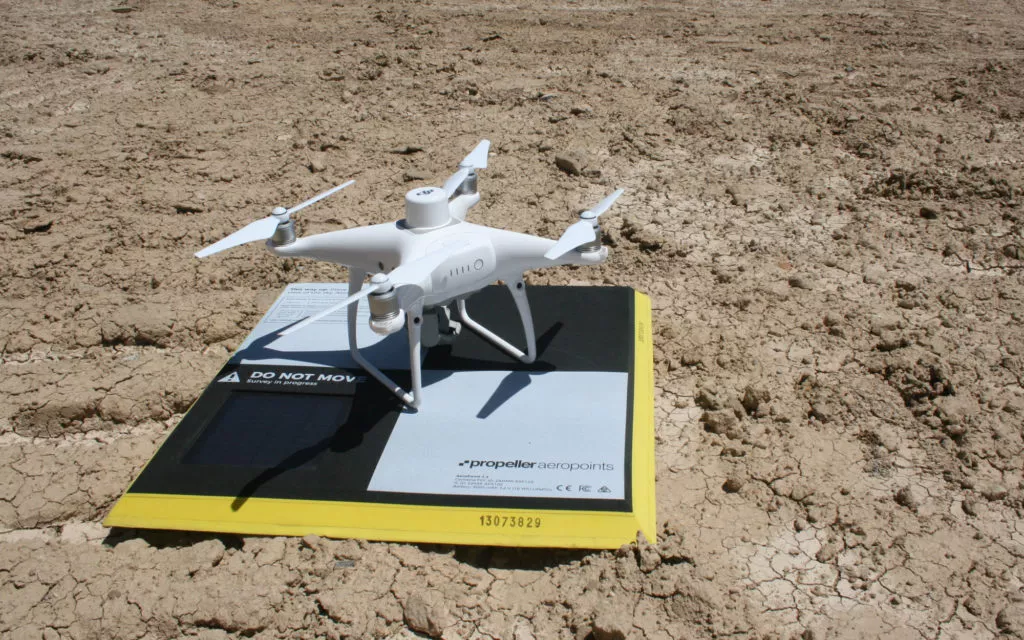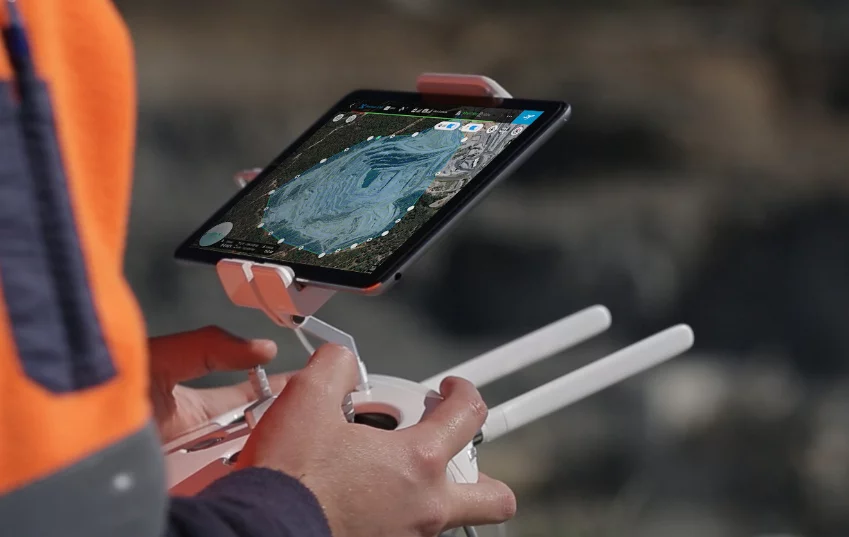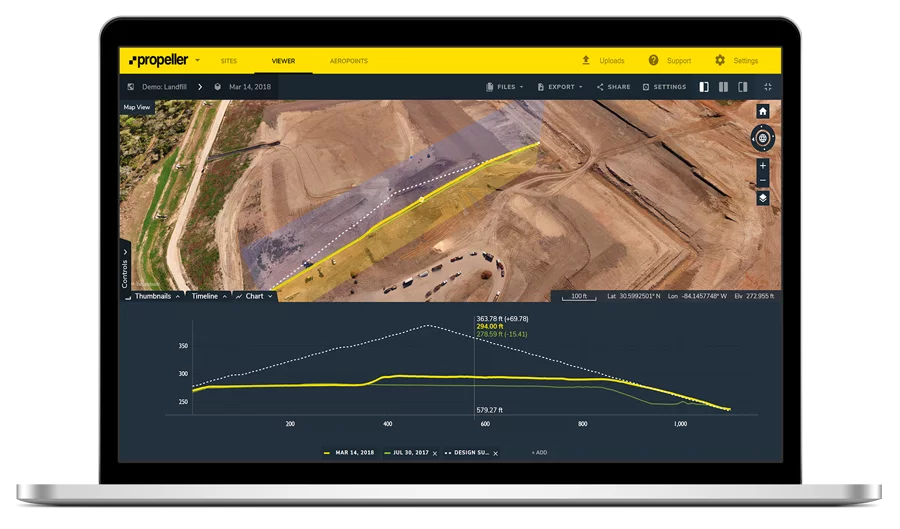Landfill Manager’s Guide to Drones
Advances in technology have made the drone an affordable tool for landfills. And, unlike traditional surveyor equipment, special training and education isn’t required.
A successful drone program can provide your business with accurate, up-to-date information on your landfill’s progress and productivity, and information you can use to ensure high-quality work and minimize operational risks and costs.
Collecting and processing your drone imagery is only part of the story. Web-based platforms can act as translators and make data readable. Take Propeller: it takes your landfill data and transforms it into a 3D survey. Fully navigable. Fully measurable.
Check local aviation regulations
Drone regulations differ depending on location. No matter why you’re flying, you need to abide by the different flight laws in your location or risk fines and other repercussions. (Websites and apps like Global Drone Regulations Database or B4YouFly are also helpful.)
Usually, all unmanned aerial vehicles (UAVs) are overseen by the country’s transportation administration, so check your country’s website for specifics. In general, keep in mind that some areas have tighter restrictions. If your landfill is near an airport, helipads, etc., you may need to get special authorization—or a licensed operator—to fly there or fly below a certain altitude.
Choose the optimal hardware for your landfill
To pick the craft that’s right for your needs, consider both the size of your landfill and budget constraint.
A landfill smaller than 200 hectares (500 acres) can be comfortably flown with a multicopter. Any larger and you might consider multiple multicopters or a fixed-wing UAV.
Budget
Typically, multicopters (especially those made by DJI) are mass produced and can be purchased easily and cheaply. Fixed-wing UAVs are still made in limited numbers, which makes units significantly more expensive—sometimes up to a hundred times more pricey.
Availability and ease of maintenance
You must also weight the added cost of maintenance and availability of parts and replacements. Stick with simple options available at local stores. Like any tool, it’s best practice to avoid providers who cannot guarantee quick repairs or replacements. Postponing surveying because you’re waiting on a replacement drone or part means losing money.
Camera
Ensure you have a high-resolution camera, with a larger sensor and a 35mm-equivalent focal length. This gets more detail about any point and increases image contrast, creating better 3D renderings and point clouds. Avoid interchangeable lenses unless you’re positive you’ll need them. For more detail, check out our article on what makes a good camera for drone surveys and inspections.
Keep in mind the camera specifications affecting ground sample distance (GSD) and resolution. GSD is the real-world size of a pixel in your images, which sets a physical limit on accuracy. To fiddle with possible GSDs, we built this handy calculator to compute them for you.
DJI Phantom 4 Pro is ideal for most landfills
With the exception of some edge cases related to size, DJI’s Phantom 4 Pro is an ideal craft for the majority of worksite survey applications. But the drone itself is just a starting point, a tool serving a greater use. To learn more, check out our blog on the topic.
Pick the right software
While there are many hardware options to choose from, you can usually rig together some combination to acquire the data you need. Software is a different matter. It’s not an interchangeable tool. There are a couple of software pieces that go into successful drone surveying. Let’s start with actually flying.
Flight planning apps
The importance of steady, consistent flight cannot be overstated. The best and easiest way to achieve that is with a flight planning app. We recommend DJI’s Ground Station Pro.
We field-tested it on real missions like 3D aerial surveys, precision mapping, and drone inspection flights. It’s accessible and has great in-flight performance.
Processing, measurement, and visualization software
After your landfill images are captured, they need processing. But processing photogrammetry is a resource-intensive process requiring lots of technical knowledge to get right. Would your team’s time be better spent on something else?
The typical desktop software of the past is optimized for processing data from a single site or a single drone. With simultaneous surveys, or multiple sites, it’s best to use cloud computing.
Cloud-based software, which doesn’t just live in your desktop, is the most cost-effective way to leverage powerful computing while being able to scale and not expend time on installation or maintenance. Having device-independent data also means easier collaboration and sharing.
If you want a deeper dive on this topic, download our ebook Drones for Waste Management: The Beginner’s Guide.








